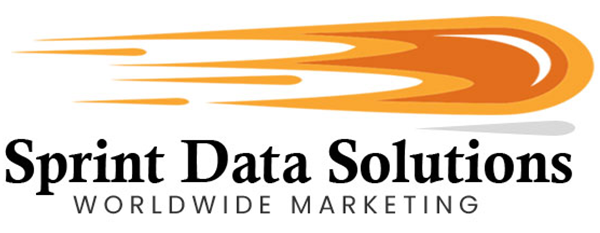Trike Owners Are A New & Growing Market
In the grand narrative of world history, the United States is a relatively young nation. Yet it is precisely this modern origin that enabled the country to grow in tandem with the industrial age, embracing technological advancement and infrastructure development at an unprecedented scale. One of the most remarkable outcomes of this growth is the vast and interconnected network of roads and highways that span the nation—an innovation that not only transformed commerce and mobility but also became a cornerstone of the American way of life.
For generations, Americans have embraced the freedom of the open road. From daily commutes to cross-country adventures, automobile and motorcycle travel has played a central role in shaping both personal lifestyles and national culture. Among these vehicles, the motorcycle stands out as a powerful symbol of individualism, adventure, and freedom. Now, as mobility preferences evolve, a new contender has emerged alongside traditional two-wheeled motorcycles—the trike motorcycle. With its three-wheel design, the trike offers greater stability, comfort, and accessibility, appealing to a growing audience that includes older riders, individuals with mobility challenges, and those simply looking for a more relaxed touring experience.
This shift represents a valuable emerging market for companies looking to connect with a demographic that blends the thrill of riding with the practicality of comfort and safety. Trike motorcycle owners often invest in customization, protective gear, travel accessories, and specialized maintenance, opening new doors for product and service providers. Recognizing this trend early, Sprint Data Solutions Worldwide Marketing has developed targeted solutions to help businesses tap into this dynamic and growing segment of the rider community.
Our comprehensive marketing databases now include trike riders, complete with detailed profiles and segmentation capabilities that allow for hyper-targeted outreach. Whether you’re in the business of selling parts, travel packages, insurance policies, or rider apparel, Sprint Data Solutions is equipped to help you reach this market with precision, insight, and proven results.

What Is A Trike Motorcycle?
As the name suggests, a trike motorcycle shares many design and performance characteristics with traditional two-wheeled motorcycles but operates on a three-wheel platform. Depending on the design, trikes come in two main configurations: the more common “reverse trike” layout with two wheels in the front and one in the rear, or the “traditional trike” style with one wheel in front and two in the back. Both configurations offer unique handling dynamics and aesthetic appeal, catering to different rider preferences and levels of experience.
The concept of a three-wheeled motorized vehicle is hardly new. In fact, early prototypes of motorized tricycles date back to the 19th century, when inventors across Europe and America were experimenting with various ways to motorize personal transport. These early designs predate the standardization of modern motorcycles and automobiles, and although the two- and four-wheeled configurations eventually became dominant, trikes remained a niche innovation with persistent appeal.
Fast forward to the early 21st century, and trikes began to see a resurgence in popularity, largely driven by custom builders offering high-end conversion kits. These kits allowed riders—often older individuals or those seeking more stability and comfort—to convert their traditional motorcycles into trikes, combining the styling of a bike with the stability of three wheels. The demand for such modifications grew steadily, prompting Harley-Davidson in 2009 to officially enter the market with the introduction of the Tri Glide Ultra Classic—its first mass-produced trike model. This move legitimized the trike format and brought it into the mainstream.
The Trike Difference
The three-wheel design of trike motorcycles isn’t merely a stylistic or fashion-driven choice—it’s rooted in functionality and rider safety, with stability being the primary advantage. Unlike traditional two-wheeled motorcycles, which require balance and continuous coordination from the rider, a trike remains upright on its own, both at rest and in motion. This design eliminates the need for riders to physically stabilize the vehicle, making it significantly more accessible for a broader range of individuals.
The modern trike movement gained traction not from large manufacturers initially, but from independent custom builders who recognized a growing demand among longtime riders. Many of these enthusiasts were aging or had suffered injuries that reduced their physical agility or balance. Despite these limitations, they still wanted to enjoy the sense of freedom, wind-in-your-face experience, and community that motorcycles represent. The trike configuration provided a new lease on riding—one that didn’t compromise the open-air appeal but reduced the physical burden of balancing and controlling a traditional two-wheeler.
Trikes also presented a more approachable learning curve for new riders. With no need to master balance or foot coordination at stops, many first-time riders who might have been intimidated by motorcycles found trikes to be a safer and more manageable gateway into the world of powersports. As a result, trikes have become popular not only among older or mobility-limited riders but also among novice motorcyclists, touring couples, and safety-conscious commuters.
This growing popularity did not go unnoticed. Recognizing both the retention potential among aging riders and the appeal to a new segment of consumers, major manufacturers like Harley-Davidson, Polaris, and Can-Am began investing in mass-market trike models. Harley’s Tri Glide series legitimized the category, while the Polaris Slingshot expanded its boundaries with an auto-like steering system and side-by-side seating—all while remaining classified as a motorcycle under U.S. regulations. These hybrid models now blur the lines between cars and bikes, appealing to those who want performance and fun with fewer physical demands and greater safety.
Who Is The Market?
The demographic profile of trike users often includes individuals from the same communities that already embrace traditional motorcycles. In fact, there is a significant overlap between two-wheel motorcycle riders and those who ride trikes, particularly in terms of lifestyle, values, and interests—such as a love of open-road travel, motorcycle culture, and mechanical customization. However, as trikes have evolved from niche custom builds into mass-produced, feature-rich vehicles, the market for them has expanded into new and diverse segments, creating opportunities for businesses to reach beyond the conventional motorcycle audience.
Trikes are attracting a wider range of users, many of whom may not have considered riding a standard motorcycle due to physical limitations, safety concerns, or inexperience. Chief among these emerging and established trike user groups are:
Elderly Riders
Trike motorcycles originally gained popularity by addressing a specific need in the riding community—providing a safe and accessible alternative for older riders. That market remains not only relevant but steadily growing. Motorcycles have been woven into the fabric of American life for generations, and many of today’s senior citizens grew up riding during the golden age of motorcycling. Now, as they enter their retirement years, their passion for the road hasn’t faded—but their ability to manage a traditional two-wheeled motorcycle may have.
Aging can bring mobility limitations, slower reaction times, balance issues, and joint stiffness, all of which make handling a conventional motorcycle more difficult or even unsafe. Trike motorcycles solve these problems by removing the need to balance or counter-steer, offering a more stable riding experience. With their three-wheel design, trikes provide a secure and supportive platform that still delivers the open-air exhilaration and independence riders love. For many, this is a way to keep the lifestyle alive without compromising safety or comfort.
This evolution has given rise to a significant and expanding market of senior trike riders who want to continue embracing the motorcycle lifestyle while adapting to their changing physical needs. In response, the demand for new products and services tailored to senior riders is rapidly increasing. Ergonomic enhancements such as wider seats with lumbar support, lower footpegs, simplified gear systems, and easier mounting and dismounting features are highly sought after. Accessories like heated grips, backrests, and visibility upgrades are also popular among this demographic.
Beyond hardware, service-based opportunities are also growing. Seniors are looking for group travel experiences, insurance products that accommodate their riding profile, protective gear with added comfort and safety features, and even mobility aids that integrate with trike use—such as ramps, custom trailers, or garage lifts. The social aspect of riding also plays a major role, with many retirees actively participating in trike clubs, charity rides, and national rallies geared toward older enthusiasts.

Disabled Riders
While some disabilities—such as total blindness—may preclude the safe operation of any motor vehicle, many individuals with physical disabilities retain the ability and desire to drive, often with minimal adaptation. For individuals who use wheelchairs, have limited mobility, or live with the amputation of a single limb, the freedom of vehicle operation remains both possible and empowering. While traditional two-wheeled motorcycles often pose significant physical challenges even for able-bodied riders, motor trikes offer a practical and transformative alternative for those with physical limitations.
The core advantage of trikes lies in their reduced physical demands, which mirror the appeal they hold for senior riders. Trikes maintain balance automatically, eliminating the need for the rider to stabilize the vehicle at stops or during low-speed maneuvers. This alone makes them more accessible to people with mobility impairments. But where trikes truly excel is in their customizability for adaptive use. Features such as hand-controlled throttle and braking systems, automatic or push-button gear shifting, electronic clutch systems, and modified foot controls enable riders with amputations, paralysis, or other motor impairments to operate the vehicle with confidence and control.
Many trikes can be tailored for wheelchair users, including models that offer roll-on accessibility, integrated ramps, and secure docking systems so riders can transfer from their wheelchair to the driver’s seat—or even operate the trike without transferring. This level of adaptability allows people with disabilities to participate in the motorcycle lifestyle on their own terms, experiencing the same exhilaration, independence, and community that motorcycles have offered for generations.
The motor trike’s expanding role in accessible mobility has made it an important tool for inclusion, not just recreation. For disabled veterans, individuals recovering from spinal cord injuries, and others facing long-term physical challenges, trikes represent more than transportation—they offer restored autonomy and renewed quality of life. They enable riders to travel, tour, and engage socially with peers in ways that might otherwise be limited.
People Who Don’t Like Motorcycles
One of the most unexpected yet exciting developments in the motor trike market is the influx of new riders who would not have considered traditional motorcycles. For many people, the balance, physical coordination, and perceived danger of conventional two-wheeled motorcycles present significant barriers to entry. However, motor trikes offer a more stable, secure, and confidence-inspiring alternative that dramatically reduces the learning curve and increases overall comfort and control—especially for those unfamiliar with motorcycle riding.
This growing appeal is particularly evident in the popularity of reverse trike models and semi-enclosed or fully seated designs. Vehicles like the Can-Am Spyder and Polaris Slingshot offer features such as car-style seating, foot pedals, seat belts, and even steering wheels, yet are still categorized as motorcycles under U.S. regulations. In many states, these vehicles require only a motorcycle license, despite feeling more like compact, three-wheeled convertibles. This blurs the lines between motorcycle and automobile, attracting a completely new audience of riders who value the thrill of open-air driving without the traditional physical demands of riding a two-wheeled bike.
This trend has significantly expanded the demographic reach of the trike market. Where once motorcycle ownership was most common among young men, veterans, or seasoned riders, trikes are now appealing to diverse groups including women, retirees, younger first-time riders, urban commuters, and those looking for a stylish and safer recreational vehicle. The broader appeal is creating opportunities across industries—from gear and accessories to insurance, tourism, and maintenance services.
As the market diversifies, so do the marketing strategies needed to reach it. This is where Sprint Data Solutions Worldwide Marketing provides unmatched value. With one of the industry’s most comprehensive and customizable consumer data platforms, Sprint enables companies to precisely target emerging rider segments based on demographic, geographic, lifestyle, and behavioral data. Whether you’re offering accessories tailored to reverse trikes, launching a travel package for new adventure riders, or providing financing options to first-time buyers, Sprint’s high-quality lists ensure your message reaches the right audience.
Who Is Sprint Data Solutions Worldwide Marketing?
Sprint Data Solutions Worldwide Marketing is a proudly American-owned and operated company founded on the values of service, resilience, and innovation. The business was the vision of a Service-Disabled U.S. veteran, who, after returning to civilian life, redirected his sense of duty from national defense to economic empowerment. His mission became clear: to help drive growth for American businesses by connecting them with their most valuable asset—customers and clients.
The company was launched in Las Vegas, Nevada, with a strong commitment to supporting local enterprises. Through a focus on high-quality data, exceptional service, and client-focused solutions, Sprint Data Solutions quickly earned a reputation for trustworthiness and results. What began as a small local operation has since evolved into a leading force in the marketing industry, now supported by a professional team with over 50 years of combined experience in direct response and digital marketing strategies.
Sprint Data Solutions entered the marketing world at a time when digital advertising was still on the horizon, and traditional methods like television, radio, and print dominated the landscape. The company made its mark in the early days with direct mail marketing, a platform that demanded deep knowledge of data management, audience segmentation, and list accuracy. These foundational skills would later prove essential as the digital revolution reshaped the marketing world.
As digital channels rapidly emerged and evolved, Sprint Data Solutions seamlessly transitioned into the digital age, becoming an early adopter of email marketing, data analytics, multichannel integration, and online lead generation. This proactive embrace of new technology gave the company a significant competitive edge and allowed its clients to outperform competitors still reliant on outdated methods.
Thanks to this forward-thinking approach, the company expanded far beyond its Nevada roots. Initially serving only local businesses, Sprint eventually broadened its reach across the entire United States, including Alaska and Hawaii. Continued demand led to expansion into North American markets, with full-service capabilities now offered in Canada and Mexico. Today, Sprint Data Solutions Worldwide Marketing proudly serves clients in international markets, including the European Union, with targeted campaigns reaching audiences in countries such as France, Germany, and beyond.

How We Can Help
Sprint Data Solutions Worldwide Marketing has spent years meticulously building one of the most comprehensive and reliable contact databases in the industry. Through a combination of in-house data acquisition and strategic partnerships with other trusted database providers nationwide, Sprint has achieved unmatched access to both consumer and business contacts across a wide array of industries and demographics. All data is collected using strictly ethical and fully legal methods, including opt-in programs, customer subscriptions, voluntary service registrations, detailed surveys, trade show submissions, and the collection of business cards with express consent for further use.
What sets Sprint apart is its ongoing commitment to data accuracy and relevance. The company understands that contact information is not static—people relocate, change jobs, retire, or pass away. That’s why all databases are routinely cleaned, validated, and updated using leading industry tools, including the National Change of Address (NCOA) database, death index cross-referencing, and corporate registration updates. This ensures that every list delivered to clients contains current, actionable data, significantly reducing bounce rates, returned mail, and wasted marketing dollars.
Yet, having access to a large volume of contact information is only part of the equation. The real value comes from Sprint’s cutting-edge data intelligence systems. Leveraging advanced artificial intelligence and machine learning algorithms, Sprint Data Solutions can perform deep data analytics to extract precise, relevant audience segments based on the client’s specific goals and parameters. These systems sort through massive datasets to identify key indicators—such as buying behaviors, industry trends, geographic targeting, or psychographic markers—allowing for hyper-personalized targeting.
Instead of delivering a generic list of names and addresses, Sprint provides refined, purpose-built datasets that are filtered, ranked, and prioritized according to client needs. Whether it’s targeting business decision-makers in a certain ZIP code, homeowners with a particular income bracket, or niche markets like motorcycle riders or trike users, every dataset is verified, categorized, and campaign-ready.
A crucial pillar of Sprint Data Solutions Worldwide Marketing’s contact databases is geographic precision. Clients can launch nationwide marketing campaigns, reaching contacts across all 50 states and U.S. territories. However, the platform also supports highly scalable and targeted outreach, allowing marketers to focus efforts with pinpoint accuracy. Campaigns can be refined by region—such as the Pacific Northwest or the Midwest—and then narrowed further to a specific state, like Oregon, and even drilled down to individual metropolitan areas, cities, ZIP codes, or neighborhoods. For example, marketers can choose to target only residents of the Pearl District in Portland, providing hyper-local relevance that increases the likelihood of engagement.
This level of geographic segmentation is particularly valuable for businesses with location-specific offerings, such as local retailers, regional service providers, political campaigns, or real estate professionals. It enables brands to avoid wasteful spending on irrelevant areas while concentrating resources on the highest-value locations.
Equally vital to the effectiveness of Sprint’s databases is its rich demographic and behavioral segmentation. These are not just lists of names and addresses—they are dynamic profiles of individuals, built around data points that capture personal characteristics, preferences, and needs. Marketing efforts can be shaped around specific ethnic backgrounds, for example, focusing on Asian American, Hispanic, or African American communities if cultural relevance is key. Campaigns may also be tailored to religious affiliations, such as targeting Catholic households for products or services tied to religious traditions or holidays.
Further segmentation is possible by income brackets, making it easy to market premium products to high-net-worth individuals or offer budget-friendly solutions to lower-income consumers. Other valuable filters include age ranges, marital status, homeownership, education level, and even health-related conditions, such as asthma, diabetes, or mobility limitations—useful for medical product and wellness campaigns.
By integrating geographic and demographic data, Sprint Data Solutions enables multi-layered targeting that not only ensures a message reaches the right place, but also resonates with the right people. This high degree of personalization leads to more effective marketing, generating greater engagement, stronger conversion rates, and higher ROI for clients.
Contact Formats & More
Sprint Data Solutions Worldwide Marketing provides its database offerings in a variety of client-specified formats to align with diverse marketing channels and campaign strategies. Whether you’re targeting consumers or B2B clients, our data is delivered in ready-to-use formats that integrate seamlessly into your existing outreach systems. For direct mail campaigns, our databases include accurate and up-to-date physical mailing addresses, ideal for postcard, flyer, catalog, or promotional mail distribution.
For digital campaigns, clients can access verified email addresses, with options for both individual consumers and business contacts. These addresses are collected and maintained in compliance with privacy and anti-spam regulations, ensuring high deliverability and ethical usage. If your strategy includes voice outreach, we also provide residential and business telephone numbers. In the B2B space, our data goes beyond just front desk reception lines—clients are provided with direct lines to key decision-makers within organizations, improving contact efficiency and reducing gatekeeping obstacles.
For mobile-centric campaigns, Sprint Data Solutions also offers cell phone numbers suited for text message/SMS marketing, which is increasingly effective for flash sales, event reminders, and urgent promotions. All contact details are curated with the goal of providing high-engagement touchpoints for the communication methods your campaign depends on most.
In addition to data delivery, Sprint offers specialized support services designed to assist clients who may not have in-house marketing infrastructure. One of our most popular services is our turnkey direct mail campaign solution. This end-to-end offering is ideal for businesses that want to launch a direct mail campaign but lack the internal resources or experience to manage it effectively. We handle everything—from audience targeting, creative development, printing, and mail fulfillment, all under one roof. This integrated approach streamlines the process, saves time, and ensures consistent quality at every stage without the hassle of coordinating multiple third-party vendors.
So whether you’re looking to promote a new product, offer a specialized service, or build awareness among a targeted segment like motor trike owners, Sprint Data Solutions Worldwide Marketing has the tools, data, and expertise to help you reach the right audience. Contact us today to discover how our marketing solutions can drive real results and meaningful ROI for your next campaign.






